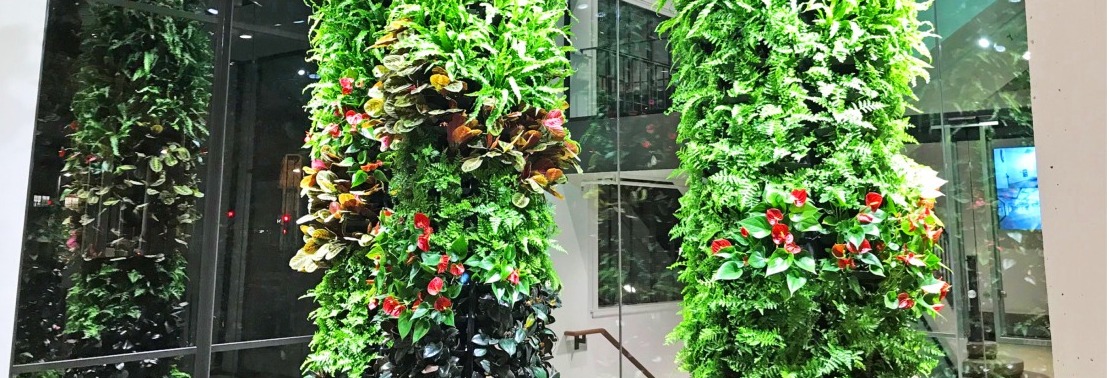André Gonçalves of E-CSR writes:
Do you want to further develop the CSR (Corporate Social Responsibility Strategy) strategy of your company?
What if installing green walls helped you improve the environmental impact of urban areas and local biodiversity, while improving employee productivity and well-being and reducing energy costs?
In this piece we take a closer look at how companies can adopt green walls as a CSR solution that’s able to positively benefit both business and the surrounding community and ecosystems.
Green walls work very well at minimizing the effects of urban infrastructure while improving social and economic value, a paper from Urrestarazu defends. That’s why urban greening initiatives such as green walls are a good way of achieving cities’ ecological goals while reducing the negative side effects of urbanization. This becomes particularly relevant under a scenario where it is expected that +70% of the world’s population will be living in urban areas by 2050. As Manso and Castro-Gomes point out, the use of outer surfaces of buildings, either walls or roofs, shows up as a very interesting alternative to adopt in usual dense urban areas lacking green spaces and street-level areas and having a hard fight fighting air pollution problems.
So what if businesses wanting to improve their corporate responsibility strategy bet on installing green walls? Both inside vertical green walls or outside vertical walls have the potential to bring social, environmental, and even financial benefits for companies.
Their Benefits are:
- Purifies Air
- Increases Well-Being
- Increases Productivity And Innovation
- Reduces Noise Level
- Reduces Ambient Temperature And Energy Costs
- Improves Brand Reputation
- Showcases Partnerships For Sustainable Development
- Improves Biodiversity
Read more: CSR Strategy: The 9 Benefits Of Business Buildings With Vertical Green Walls
 Greenroofs.comConnecting the Planet + Living Architecture
Greenroofs.comConnecting the Planet + Living Architecture






George Irwin
What the article does not disclose is the waste between water and environment. It also does not mention the runoff of the walls and roofs containing fertilizer… some of these projects are more of an environmental hazard to both public and environment. I’ll be happy to point out quite a few!
Hal Thorne
With proper wall maintenance, irrigation programs are routinely adjusted to minimize water waste while keeping plants watered adequately. GSky systems are designed to minimize water waste. I cannot speak for roof fertilizer runoff, but for walls the concentration ratio of fertilizer to water rate is extremely low (if done as directed). In exterior situations it drains into the soil or landscape below the wall. For interior walls, residual fertilizer is most often recycled back into the dedicated water supply to the living wall.
George Irwin
Some of the worst offenders are the result in the system design, itself. Third party calculations for one wall in London wastes over 1 million gallons alone that drains to the sub-surface and into the Thames river. Others do in fact drain to the landscape below. https://www.youtube.com/watch?v=v0DQUdIQOPg however excessive runoff is a result of the irrigation needs of a particular system in general. Coco and rockwool are prime examples of systems that require excessive water use.
Garry Root
So what if businesses wanting to improve their corporate responsibility strategy bet on installing green walls? Tell Me More About The strategy.